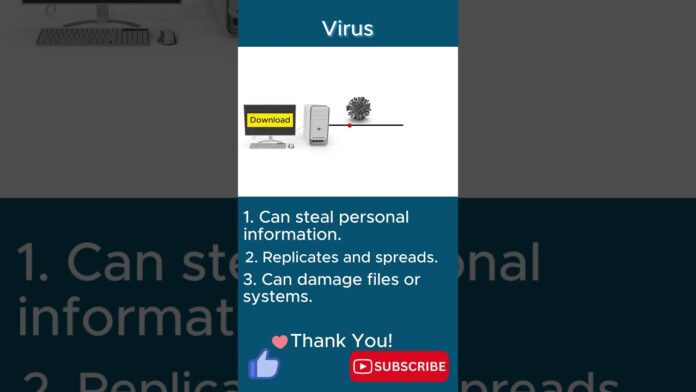In the intricate landscape of cybersecurity, viruses stand as one of the most pervasive and insidious threats to network integrity and data security. These malicious programs, aptly named after their biological counterparts, propagate rapidly and stealthily infect systems, wreaking havoc on networks, and compromising user privacy. In this article, we delve into the multifaceted nature of viruses, exploring their characteristics, propagation methods, detection techniques, and strategies for defense.
Understanding Viruses:
A computer virus is a type of malware designed to replicate itself and spread from one computer to another, often with malicious intent. Unlike other forms of malware, viruses attach themselves to legitimate files or programs, exploiting vulnerabilities in operating systems and applications to infiltrate systems and execute malicious code. Once activated, viruses can perform a variety of harmful actions, including:
- Data Corruption: Modifying or deleting files, documents, and system configurations, leading to data loss and system instability.
- System Compromise: Exploiting system vulnerabilities to gain unauthorized access, install additional malware, or create backdoors for remote control.
- Botnet Recruitment: Enlisting infected systems into botnets, distributed networks of compromised devices controlled by malicious actors for coordinated cyber attacks or spam campaigns.
- Data Theft: Stealing sensitive information, such as login credentials, financial data, and personal files, for identity theft or financial fraud purposes.
Modes of Virus Propagation:
Viruses can spread through various vectors, including:
- Email Attachments: Concealing virus payloads within email attachments or links leading to malicious websites, exploiting human curiosity or urgency to trick users into opening them.
- File Sharing Networks: Infecting files shared through peer-to-peer (P2P) or file-sharing networks, exploiting unprotected systems to propagate to new hosts.
- Removable Media: Spreading through infected USB drives, external hard disks, or other removable media containing virus-laden files or executables.
- Drive-by Downloads: Exploiting vulnerabilities in web browsers, plugins, or software applications to silently download and install virus payloads when users visit compromised or malicious websites.
Detecting and Mitigating Viruses:
Detecting and mitigating virus threats requires a multi-layered approach to network security, including:
- Antivirus and Anti-Malware Solutions: Deploying robust antivirus and anti-malware software capable of detecting and removing virus infections from compromised systems.
- Firewalls and Intrusion Detection Systems (IDS): Implementing firewalls and IDS solutions to monitor network traffic, detect suspicious behavior indicative of virus activity, and block malicious connections.
- Behavioral Analysis: Employing behavioral analysis techniques to identify anomalous system behavior, such as unauthorized access attempts, data exfiltration, or unusual network traffic patterns associated with virus activity.
- User Education and Awareness: Educating users about the risks of virus threats, phishing scams, and unsafe browsing habits to reduce the likelihood of inadvertently downloading or executing virus-laden files.
Prevention Strategies:
To prevent virus infections and safeguard network integrity, organizations should implement the following preventive measures:
- Software Updates: Keeping operating systems, applications, and security software up-to-date with the latest patches and security updates to mitigate known vulnerabilities exploited by viruses.
- Download Vigilance: Exercising caution when downloading and installing software from untrusted sources, verifying the authenticity and integrity of software downloads to avoid inadvertently installing virus-infected programs.
- Access Control: Implementing least privilege principles and role-based access controls (RBAC) to restrict user permissions and limit access to sensitive data and resources, reducing the risk of virus infiltration and data compromise.
- Network Segmentation: Segmenting network infrastructure into separate zones or VLANs to contain virus infections and prevent lateral movement within the network, limiting the scope of potential damage and data exfiltration.
Viruses represent a formidable and ever-present threat to network security and data privacy, exploiting vulnerabilities and human fallibility to infiltrate systems, compromise sensitive information, and disrupt organizational operations. By understanding the tactics and behaviors of viruses, implementing proactive detection and mitigation measures, and fostering a culture of cybersecurity awareness and vigilance, organizations can effectively mitigate the risks posed by virus threats and safeguard their networks from clandestine intrusions and data breaches. In the dynamic landscape of cybersecurity, resilience, innovation, and collaboration are essential in the ongoing battle against viruses and other emerging cyber threats, ensuring the integrity, confidentiality, and availability of network resources and data assets.
